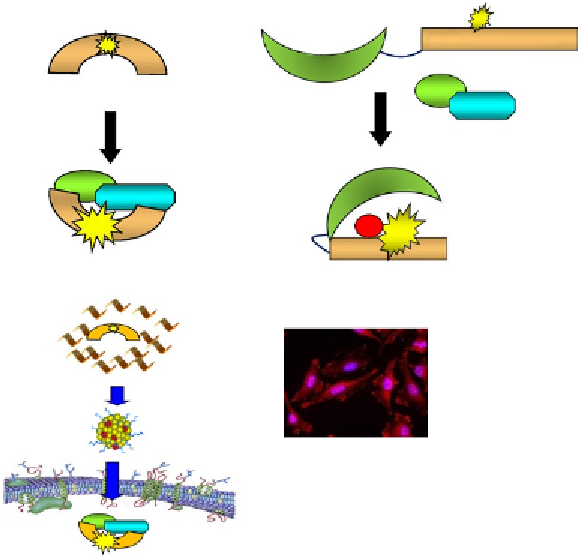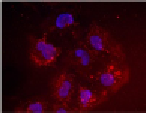Biology Reference
In-Depth Information
A
B
Phosphorecognition
domain
Substrate sequence
Biligand peptide
CDK
Cyclin
+ATP
+MgCI2
CDK
Cyclin
P
C
D
CDKSENS
CPP
HeLa
U20S
CPP / biosensor
nanoparticles
Cell membrane
A549
MCF-7
CDK
Cyclin
Figure 6.14 CDKSENS and CDKACT biosensors. (A) CDKSENS and (B) CDKACT biosensors
are fluorescent peptide biosensors that allow probing the relative abundance and the
kinase activity of cyclin-dependent kinases, respectively, in vitro and (C) in living cells
following delivery mediated by cell-penetrating peptides. (D) A representative example
of CDKSENS labeled with Cy3 internalized into different cancer cell types.
high levels or activities of CDK/cyclin kinases from cells that present
decreased or defective assemblies.
CDKSENS provides information on CDK/cyclin complexes that is not
conveyed by antibodies that recognize individual CDK or cyclin subunits.
Likewise, CDKACT allows circumventing the requirement for antigenic
or radioactive assays to report on CDK/cyclin kinase activity. As such, these
technologies offer promising perspectives for the development of
fluorescence-based cancer diagnostics, present strong potential for monitoring
response to therapeutic strategies targeting CDKs or cyclins, and constitute
attractive tools for drug discovery programs.





Search WWH ::

Custom Search